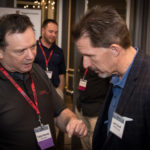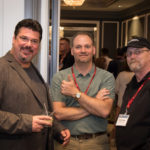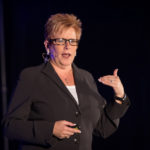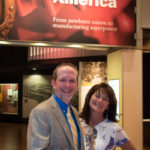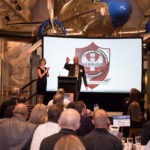Dearborn, Michigan, was the location for the 2016 AMBA Annual Conference, held May 11-13. Nearly 200 mold manufacturers and industry suppliers descended upon the birthplace of today’s US automobile manufacturing center to network with fellow industry members and fuel the American ingenuity and innovation that make the mold building industry a success. From former executives at the Disney Institute, NHL champions and retired Air Force pilots to mold building industry peers, attendees heard ways to shift traditional ways of thinking about competition, recruiting, marketing and moving forward.
Shift Your Brilliance – Harness the Power of You
Simon T. Bailey, Simon T. Bailey International
 Speaker and author Simon T. Bailey is the leader of the “brilliance” movement – helping more than one million people find their brilliance, shift their thinking and produce sustainable results. Bailey’s previous work experience includes serving as sales director at the world-renowned Disney Institute based at Walt Disney World Resort. In 2003, he founded Brilliance Institute, Inc., to teach companies how to grow their most important asset – people.
Speaker and author Simon T. Bailey is the leader of the “brilliance” movement – helping more than one million people find their brilliance, shift their thinking and produce sustainable results. Bailey’s previous work experience includes serving as sales director at the world-renowned Disney Institute based at Walt Disney World Resort. In 2003, he founded Brilliance Institute, Inc., to teach companies how to grow their most important asset – people.
Bailey spoke about the emotional equity that exists in “the way we’ve always done it,” which is a powerful force working against change. He said employees come to work and want to leave an impact, but often get caught up in a fast environment that has multiple priorities, but no clear vision. The resistance to new ideas leaves employees and management worn down and suffocates the brilliance that lies in individual thinking and enthusiasm, he said.
He challenged audience members to act as leaders within their organizations by doing the following:
See Differently – Give your business a fresh start by looking at it and understanding it in a new way. Step outside of “the way it’s always been done” to see what possibilities exist.
Harness the Power of You – Examine ways in which you support the thinking and actions of the people you work with, and then step up your game.
Ignite a Fresh Vision – Share with others your idea of what the organization should look like.
Fuel Your Mind – How do you encourage training, thinking and growing? Are you teaching your employees or coworkers ways in which they can see differently?
Take the Wheel – How can everyone be a leader? Make an impact? Take ownership? Are you setting the pace or holding everyone else back?
Engage Your Gears – Find a path through the clutter of your competition by asking a few questions about what makes you different. What is the story? What is the value? What drives the individual and the business?
Restart Your Engine – Leading and engaging with new ideas is not a short-term proposition. How do we do it every single day?
Everyday Leadership
Bill Clement, Two-Time Stanley Cup Champion
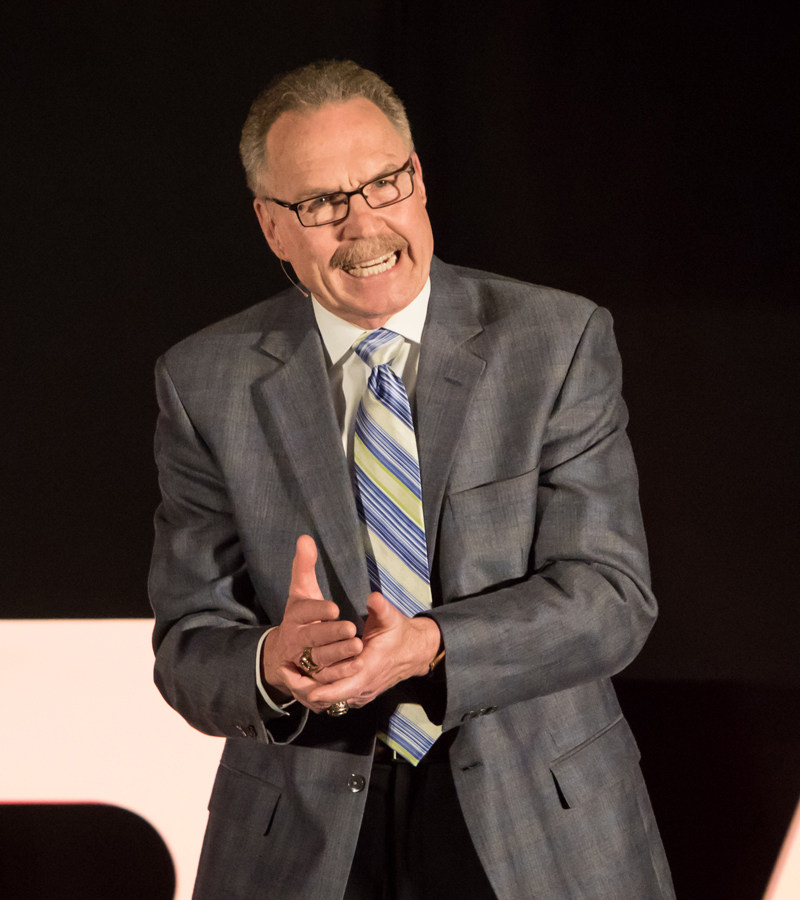 Two-time Stanley Cup champion Bill Clement is a speaker, broadcaster, actor, entrepreneur and author. His new book, “EveryDay Leadership – Crossing Gorges on Tightropes to Success,” introduces valuable life lessons linked to leadership and success, all born from the devastation of personal and financial defeat.
Two-time Stanley Cup champion Bill Clement is a speaker, broadcaster, actor, entrepreneur and author. His new book, “EveryDay Leadership – Crossing Gorges on Tightropes to Success,” introduces valuable life lessons linked to leadership and success, all born from the devastation of personal and financial defeat.
Clement was a championship hockey player with the Philadelphia Flyers. An All-Star center, he fought through injury to help the Flyers win two Stanley Cups, but when his career ended, he suffered through depression and bankruptcy before finding new career opportunities in the broadcasting booth and acting. With touching stories and laugh-out-loud humor, Clement reflected on his time in the National Hockey League and the lessons he learned from those he skated with, those he worked for and those he led as a captain of his team.
First and foremost, leaders – whether on the hockey ice or in the business world – need to earn trust and respect. That comes from day-to-day behavior in the workplace witnessed by those you are trying to lead.
Everyday leaders do the following:
Embrace challenges. From competition from rivals to economic downturns and the struggle to recruit youth to the industry, Clement explained that leaders embrace and attack those challenges, rather than ignoring them or waiting for others to provide solutions.
Leave yesterday behind. Whether wins or losses, leaders leave the events of the previous day or year in the past and look ahead with vision, strategy and enthusiasm.
Be an energy source. Every organization has those who suck the energy from the room and those who light others up. Be someone others can plug into for encouragement.
Give more to their cultures than they take. Those who lead put more into their organizations – more energy, more knowledge, more resources – than they remove.
Pull people, as opposed to pushing people. A leader who forces employees or coworkers to perform tasks, rather than encouraging them to follow, is never effective – or at least, not for long.
Never Fly Solo!
Lt. Col. (retired) Rob “Waldo” Waldman
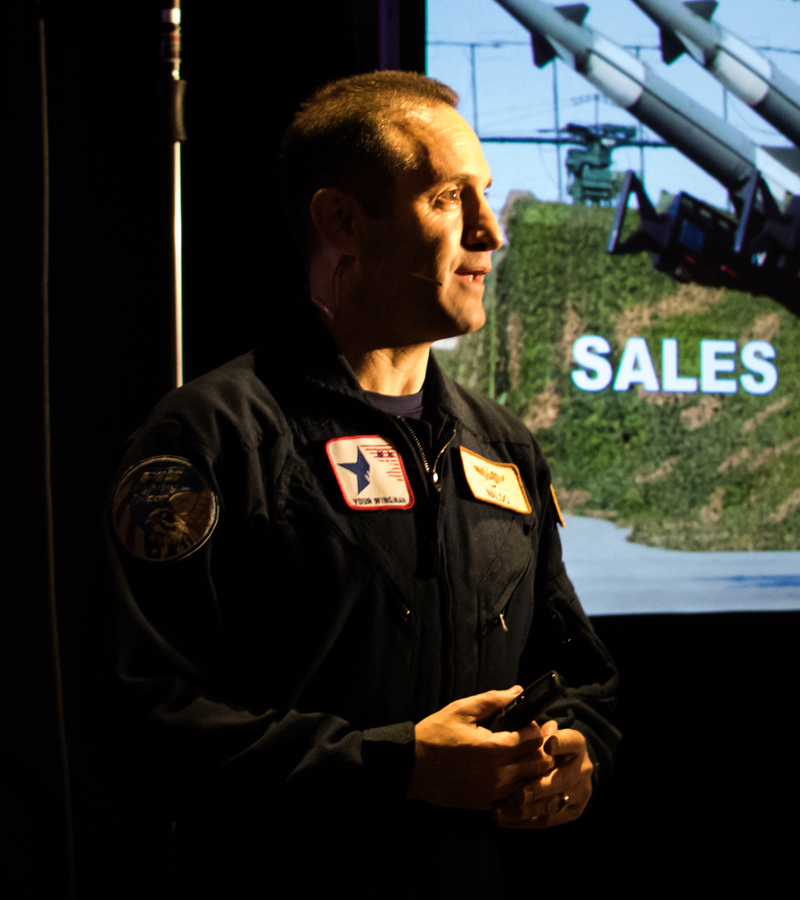 Lt. Col. (retired) Rob “Waldo” Waldman is a professional leadership speaker and author of the New York Times and Wall Street Journal bestseller “Never Fly Solo.” He teaches organizations how to build trusting, revenue-producing relationships with their employees, partners and customers while sharing his experiences as a combat-decorated F-16 fighter pilot and businessman. He believes the key to building a culture of trust lies with a person’s wingmen – those people who help to overcome obstacles, adapt to change and achieve success.
Lt. Col. (retired) Rob “Waldo” Waldman is a professional leadership speaker and author of the New York Times and Wall Street Journal bestseller “Never Fly Solo.” He teaches organizations how to build trusting, revenue-producing relationships with their employees, partners and customers while sharing his experiences as a combat-decorated F-16 fighter pilot and businessman. He believes the key to building a culture of trust lies with a person’s wingmen – those people who help to overcome obstacles, adapt to change and achieve success.
Waldo encouraged audience members to train their teams thoroughly for each mission, to build a company culture that promotes integrity and support and to lead their teams in a way that enables each member to become a wingman. To do so, Waldo – who was terrified of heights – told of the time he had to jump off a 33-foot diving board as part of his fighter pilot training. Thirty-three feet (which might as well have been a 500-foot cliff) stood between Waldo and his dream career, so he took a deep breath and made the leap. He asked audience members, “What is your 33 feet? What is standing between you and your own success?”
Successful wingmen are dedicated to these principle commitments:
Commitment to yourself. Complacency kills, and a commitment to yourself means never settling into a habit of complacency. “Your comfort zone is your danger zone,” and a wingman has to be ready to get out of that comfort zone. A wingman is always willing to stretch himself, even in the face of difficult changes and adversity.
Commitment to the mission. Waldo recounted stories of his days as a fighter pilot in which he committed to learning and practicing for missions because a wingman is always mission ready. This commitment to mission encouraged audience members to always be prepared and be ready with a contingency plan, which builds trust in their teammates.
Commitment to the team. When you know who your wingmen are and who you’re a wingman for, you ensure that you never fly solo. Leaders build trust with their teammates by supporting, collaborating and watching for potential threats. True wingmen do not focus on ranks or titles, but on building up everyone in their team.
Commitment to courage. “Lose sight, lose fight,” is the motto for this commitment. Leaders are ready to take action despite fear, apprehension or ego. Audience members were encouraged to reflect on their own purpose and to be ready to take risks to fulfill that purpose. A wingman’s courage allows him to help, ask for help and let teammates know he will not let them fail.
Peer Learning at Its Best
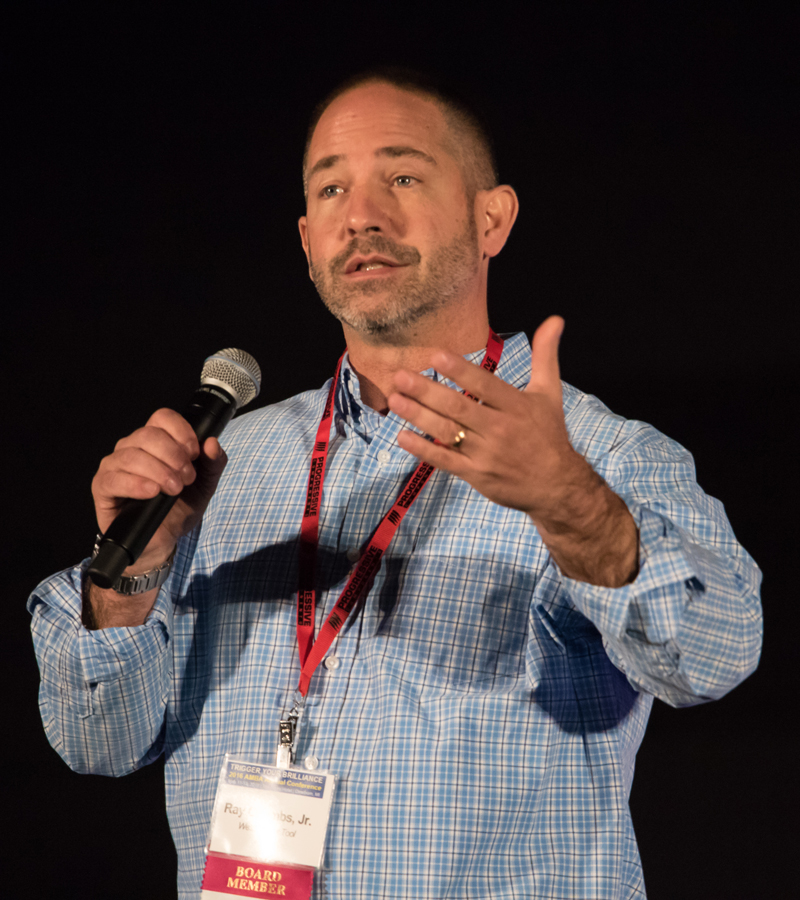
While the keynote speakers provided down-to-earth lessons on leadership and perseverance, wisdom and takeaways also were found with AMBA-member presenters and industry-professional panels.
Troy Nix, AMBA executive director, impressed upon attendees the power of gratitude in creating a powerful upswing of energy and enthusiasm for daily work. Laurie Harbour, president and CEO of Harbour Results, Inc., dissected the habits of best-in-class mold builders and discussed key economic indicators and market trends that the mold industry should monitor.
Two panel sessions gave mold builders an inside look into the decision-making processes of plastics molders and OEMs. The first panel, “The Global Viewpoint: The ‘Why’ Behind How Plastics Processors Source Tools,” featured Kelly Goodsel, Viking Plastics; Tim Capps, Par 4 Plastics; and Gene Nolen, Manar, Inc. The second panel, “Cross Industry Tooling Strategies,” featured Gareth Jolly, General Motors; Jacob Carter, Briggs & Stratton; and John E. Meddles, Whirlpool.
Finally, providing a fitting end to a conference schedule filled with information that could be implemented to improve operations in a variety of aspects, Ray Coombs and Kylie Carbone, Westminster Tool, Inc., shared data on the continuous improvement efforts in their facility, from daily improvements instigated by floor-level employees to formal training programs and partnerships with other educational institutions to funnel employees into its workforce.
Awards Reception Held at The Henry Ford Museum
On Thursday evening, attendees gathered first at The Henry Hotel for a networking reception and then boarded transportation for a short ride to The Henry Ford Museum. A strolling dinner was enjoyed as attendees explored the museum displays, which included presidential and racing industry automobiles, among many others.
When it was time to honor the best in the industry, Lt. Col. (retired) Rob “Waldo” Waldman opened the event and Tim and Kim Bartz took the stage to provide an update on the iWarriors program. iWarriors provides iPads to combat-wounded veterans through the generous support of many of the mold building companies and suppliers in attendance, and the video is a highlight of the event each year.
New Board of Directors President Justin McPhee was announced as Michael Bohning stepped down from the role, and the evening culminated in the presentation of the Mold Builder of the Year and Chapter of the Year awards.



